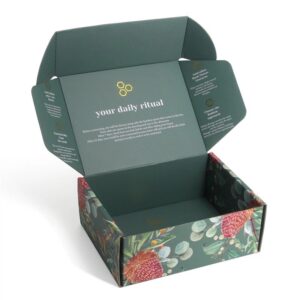Now that the new iPad has been revealed, everyone’s chiming in on whether it’s a disappointing incremental upgrade or a fantastic breakthrough. None of that matters to its success, of course. If every single previous iPhone and iPad product launch is any indication, Apple is going to sell truckloads of these things no matter what any expert, hater or fanboy says.
However, there’s one thing that makes this iPad release different from ealier ones: The new iPad will be the Apple device that goes head-to-head with Windows 8 tablets when they arrive later this year. Microsoft‘s new OS will spawn an entirely different species of tablet than the Android devices that have so far been Apple’s main competition. And if Microsoft plays its cards right, it could be the one that finally gives the iPad a serious challenge in the market.
So far, no product has been able to do that. The first “real” Android tablets, like the Motorola Xoom, were largely ignored by consumers. The newer tablets and latest Android upgrades are certainly better, but they’re still hampered by an amorphous ecosystem. Those examples of up-scaled phone apps on Android that Tim Cook cued up in his keynote were pretty damning, and he also said there were 200,000 iPad apps in the App Store. Google doesn’t give an official count of tablet-specific Android apps in Google Play, but estimates are in the thousands.
Tablet Non-Contenders
Non-Android tablets look even worse. RIM fumbled the launch of the BlackBerry PlayBook so badly that the tablet — and possibly RIM’s whole credibility in the space — will never recover. HP killed its consumer tablet offering, the TouchPad, mere weeks after launch upon realizing the iPad was an opponent it couldn’t hope to defeat.
Certainly, the Amazon Kindle Fire and Barnes & Noble Nook are success stories, but they kind of cheated. Both have only managed to carve out a niche market among tablets by selling their devices at a rock-bottom prices (the Kindle Fire’s is so low that Amazon may be selling it at a loss). They can only do this by using the device itself as an outlet to sell specialized content. These products aren’t going toe-to-toe with the iPad — they’re fighting over the scraps of the market it’s left behind.
So far no device has been able to seriously challenge the iPad experience in its entirety. Basically, the tablet market has yet to see its Motorola Droid, the phone that finally showed, along with Android 2.0 software, that the iPhone wasn’t the end-all-be-all of smartphones. Android’s success skyrocketed after its release.
Windows 8 to the Rescue?
Could the tablet market’s dark horse be a Windows 8 device? It’s possible, but it hinges entirely on how consumers respond to the new user interface, Metro.
The thrust of Windows 8 — and why it’s such a big gamble my Microsoft — is that it brings the same UI to tablets and traditional PCs (desktops and laptops). Metro is ideally suited for touchscreens, but it works with a mouse and keyboard, too.
There’s a reason Microsoft has done this, and it’s not really the spirit of bringing tablet features to your laptop. Quite the opposite, in fact. In order to have any hope of succeeding in tablets, Microsoft has to convince its army of Windows developers to make software for those tablets. But no one’s going to develop software for an unproven OS where the company has seen little commercial success (no current Windows tablet has significant market share).
However, if your entire OS, including traditional PCs, is running the same software, then developers almost have no choice but to design apps for tablets. Windows 8 essentially turns all Windows developers into tablet developers, potentially giving the Windows 8 tablet platform the fuel it needs to expand rapidly and finally give the iPad a real opponent.
The Catch: Metro
Again, almost. There’s one thing that could hold it back: consumers rejecting Metro. You see, Windows 8 lets any user turn off Metro and just use the traditional desktop. If enough of them do, many developers may simply choose not to create Metro apps. After all, if most of your customers are just switching to the old Windows environment anyway, why bother?
That would let the air out of the expanding Windows 8 tablet balloon pretty quickly, and that’s even before we consider the wild cards of potential device fragmentation, how Windows will work on ARM devices and whether or not consumers will even accept a tablet as their main computing device.
Microsoft needs to get Metro 100% right if Windows 8 tablets are going to have any hope. If users like Metro, then the developers will follow, and a real ecosystem will emerge. If not, the iPad will probably be the only tablet worth talking about for a long, long time.
BONUS: A Tour of Windows 8 and Metro
Here’s what greets you every time you log into your Windows 8 machine. Yes, the tiles are customizable, though it’s a little unwieldy in practice.
Sharing is arguably Metro’s most powerful feature. Although the sharing option is only populated with Mail right now, once Windows 8 apps get going, you’ll see options here like Facebook, Twitter and all the rest — in every app.
You can still get back to the familiar desktop anytime you want in Windows 8. Note the absence of a Start button, which you get to by mousing into the lower-left corner.
Dell inspiron 2200 battery brand new 4400mAh Only AU $60.79
Dell precision m70 battery brand new 4400mAh Only AU $53.85

Bing Maps, like all Metro apps, makes use of the entire screen. Right-clicking brings up options.

You can see which apps are running by pointing your mouse to one of the left corners and then moving it alongside. Right-clicking an app lets you stop it.

The side action menu slides out via the side and is the same no matter what app you’re in.
The consumer preview of Windows 8 still has lots of bugs in it, as evidenced by this screen shot of the email app.

Since the entire screen in Internet Explorer is dedicated to showing you the web page, right-clicking twice shows you the tabs that are open.

Messaging ties with your People app, bringing in contacts on Windows Messenger or Facebook.

The Windows 8 Photo app has built-in integration with Flickr, but it wasn’t working on our device.
Your 25GB of free SkyDrive space is easily accessible via a live tile, and it integrates with the Photos app, letting you avoid sending large email attachments by uploading pics to SkyDrive.

The Weather app also looks beautiful in Metro.

Through settings, you can make changes to your Windows profile, which will show up — apps and all — on any Windows 8 machine you log into.

Yep, you still need to download Flash to get your browsers to play many videos, like those on YouTube.

You can customize your Start menu with specific apps, even if they’re desktop-only apps like the browsers seen here.

The video hub doesn’t just show video files — it also promotes content as well. Whether that’s a plus or a minus is up to you.

Solitaire was available on our Consumer Preview device via Xbox Live, though Microsoft said it couldn’t guarantee it would be in the general release.









4 thoughts on “Windows 8 Tablets Could Seriously Challenge the New iPad”
Comments are closed.